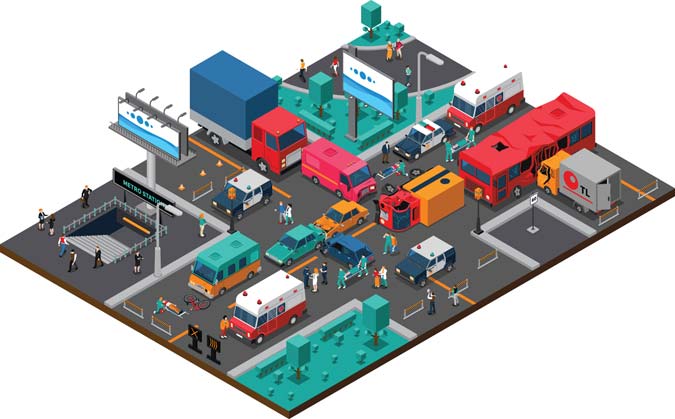
Safety behind the wheel remains a priority for both drivers and fleet managers going into 2022, and the Covid-19 pandemic has driven this point home like nothing else in recent memory.
As more and more cargo has been shipped due to rising demand in online ordering and corrective measures being put into place regarding supply change management, drivers are spending more extended amounts of time on the road. This naturally leads to a rise in the potential for accidents simply due to simple statistics.
Video Telematics Serve as Protection
To protect drivers from blame in accidents that were not their fault, many fleet managers have turned to video telematics, including in-cab camera equipment. Driver pushback to these sorts of measures has been an ongoing challenge since the advent of in-cab camera recording. Still, even drivers are seeing the benefits these days as these devices act to promote driver safety. Understandably, drivers may be apprehensive about having an in-cab camera monitoring behavior, but the safety benefits are often worth the small trade-off.
Fleet managers have overcome objections by putting the cost of accident liability into real dollars and cents for drivers. A driver accused of causing an accident that involves injuries and property damage may cost a company millions of dollars in extreme cases. To add to this, some drivers could even be personal face prosecution in certain circumstances, resulting in the potential for money coming out of the driver’s wallet.
AI Saves Time
When utilizing video technology to gather telematics, efficiency is crucial. Reviewing hours upon hours of footage can be time-consuming, so companies like Verizon have developed advanced artificial intelligence (AI) tools to help. Verizon Connect is a video telematics system that utilizes the power of AI to automatically review and analyze footage in the event of certain driver behavior triggers. Some of these triggers include accidents and vehicle malfunction, but erratic driving may also trigger a clip for review.
Upon review by AI, clips are categorized for later viewing by relevant stakeholders. This technology reduces the time needed to review footage manually. It also ensures that key moments are captured if a camera was not manually engaged prior to an over-the-road incident. Systems like Verizon Connect point to the potential for a safer future for drivers and commuters who share the road.



